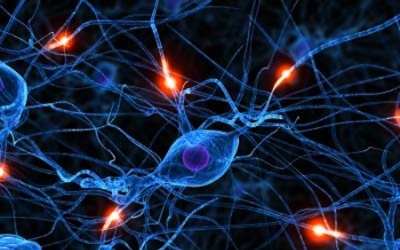- Latest news▼
-
12:27, April 23 Appetite: Scientists found out the secret to the appeal of large portions of fast food

-
10:33, April 23 Scientists test new approach to fighting viruses

-
08:38, April 23 Ketamine may help with postpartum depression

-
22:12, April 22 Unhealthy amount of sugar found in baby food products of a well-known brand

-
19:41, April 22 Air pollution puts health of more than 1.6 billion workers globally at risk

-
17:25, April 22 Scientists found baked goods and lack of sleep to be more dangerous than alcohol

-
16:02, April 22 342 cases of measles recorded in Armenia so far in 2024

-
15:29, April 22 BrainStimulation: electrical brain stimulation alleviates anxiety and depression in the elderly

-
08:27, April 22 Cognitively stimulating jobs in midlife could lower dementia risk in old age, study finds

-
20:37, April 21 Environmental Health Perspectives: Microplastics ingested with food and water can spread from the gut to the brain

-
22:41, April 20 Scientists develop new method to safely stimulate immune cells to fight cancer

-
20:46, April 20 Blood test can determine who is at risk of developing multiple sclerosis - scientists

-
18:36, April 20 Next pandemic likely to be triggered by flu - scientists

-
12:16, April 19 Scientists grow human mini-lungs in lab

-
10:23, April 19 JAMA Oncology: Urine test can help rule out high-grade prostate cancer with almost 100% accuracy, study shows

All materials
Stem cells reverse blindness, heal brains

Scientists have successfully implanted organs grown from stem cells, however direct injection of stem cells for treatment has mostly failed because the cells often die after being introduced into the body.
Stem cells injected into mice using a hydrogel survived introduction into the rodents' bodies, restoring eyesight and repairing brain injuries after stroke, showing promise that high hopes for stem cell therapy have not been misplaced, a new study found.
The hydrogel, invented at the University of Toronto by professor Molly Shoichet, is made up of hyaluronan, which keeps stem cells alive, and methylcellulose, a chemical compound that forms a solution which holds the stem cells together.
Originally, the substance was used to hold stem cells together when being injected into a transplant site to help healing and acceptance new organs by the body.
"This study goes one step further, showing that the hydrogels do more than just hold stem cells together; they directly promote stem cell survival and integration," Shoichet said in a press release. "This brings stem-cell based therapy closer to reality."
Photoreceptors, grown from stem cells, were injected into the eyes of blind mice using the hydrogel. These cells, what eyes use to detect light, began to restore about 15 percent function to the pupils. Researchers also saw mice that had recently suffered strokes start to regain motor function after stem cells were injected into their brains.
Since the cell injections were successful in two different parts of the nervous system, researchers think the hydrogel would be effective in other parts of the body as well.
Follow NEWS.am Medicine on Facebook and Twitter
- Video
- Event calendar
- Archive
- Most read
month
week
day
- JAMA Oncology: Urine test can help rule out high-grade prostate cancer with almost 100% accuracy, study shows 1201
- Daily Mail: Elderly woman in China gets infected with brain-eating amoeba 1162
- The Conversation: childhood trauma can cause pathological hoarding 1145
- Obesity: exercising before breakfast helps you lose weight faster 1145
- Daily Mail: Satiating food reduces cravings for sweets, nutritionist says 1118
- Scientists grow human mini-lungs in lab 1097
- First Armenian-German Conference entitled “Heart Failure Spring School” 1061
- Next pandemic likely to be triggered by flu - scientists 669
- Scientists found baked goods and lack of sleep to be more dangerous than alcohol 602
- Blood test can determine who is at risk of developing multiple sclerosis - scientists 553
- 342 cases of measles recorded in Armenia so far in 2024 549
- Scientists develop new method to safely stimulate immune cells to fight cancer 546
- Cognitively stimulating jobs in midlife could lower dementia risk in old age, study finds 531
- BrainStimulation: electrical brain stimulation alleviates anxiety and depression in the elderly 486
- Air pollution puts health of more than 1.6 billion workers globally at risk 317
- Find us on Facebook
- Poll





